How to plant an apple tree in the spring on an old tree?

Grafting an apple tree on an old tree in the spring helps to increase yields and renew crops. It is most convenient to do this procedure after the winter cold period.
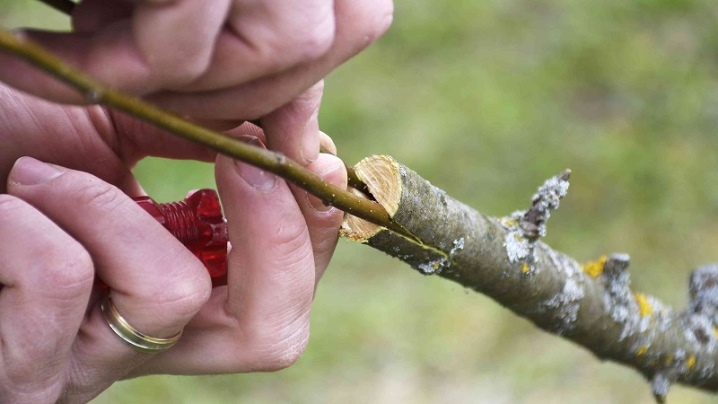
Timing
According to gardeners with extensive experience, it is most effective to plant an apple tree in the spring on a stump from an old tree, although it is permissible to do this at any time of the year, but subject to the creation of greenhouse conditions. In the spring, trees tolerate this procedure as easily as possible. At the same time, the weather conditions during this period are optimal for such manipulations. Another reason for spring grafting is the availability of a wide variety of natural supplements.
Spring grafting makes it possible to see the results of work in the fall, as well as correct imperfections and prepare for the next spring season. There are no specific terms for vaccination, since it all depends on the type of plant, weather conditions. The easiest way is to focus on the air temperature. It is important not to miss the moment when it will keep above zero. From this point on, you can begin to prepare materials for future vaccination.
Factors affecting the timing of vaccination:
- climatic conditions;
- quality and type of scion;
- season;
- vaccination method;
- the level of preparation of the gardener;
- apple variety.
The appearance of buds and the beginning of foliage growth is a signal for the vaccination.
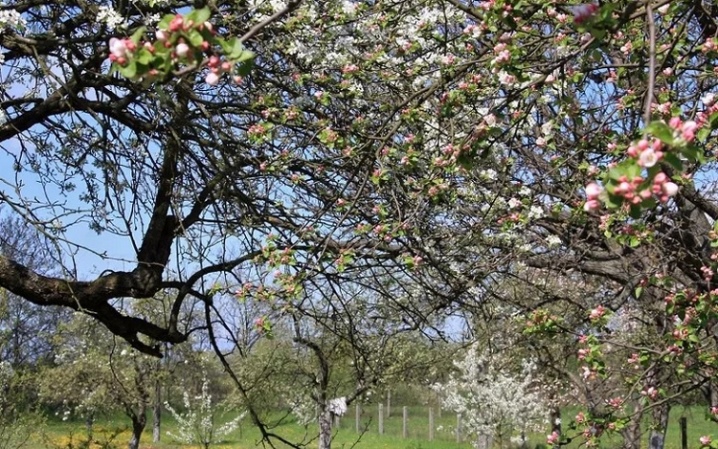
Vaccination methods
Today, there are more than two hundred methods of grafting apple trees on old trees. They can be carried out by means of a bud or seedling. Let's describe the most popular and common ones available.
By copulation
The technique involves combining a scion with a stock of similar thickness. A more modern option is to create additional cuts on these elements. First, oblique cuts should be made both on the handle and on the apple tree. After that, form the slices at the height of the third part from the base. The rate of accretion between the base and the apple tree will depend on the length of the cut. The final stage is securing the cutting.
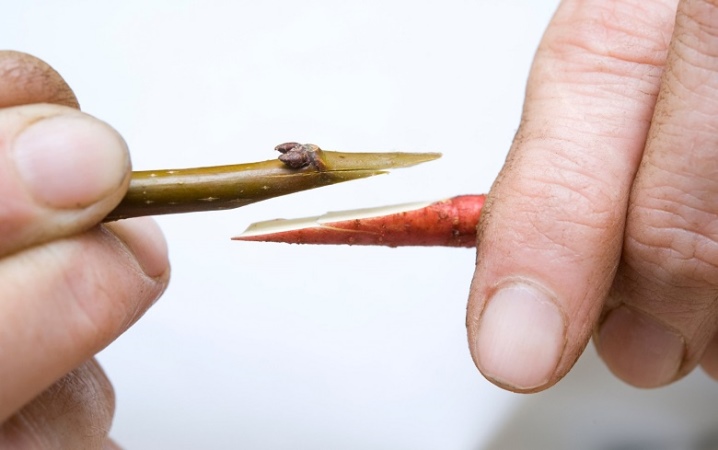
Into the cleft
The method is effective for grafting rootstock and scion with a significant difference in thickness. To carry out this procedure, you must separate the branch at a distance of 30 cm from the trunk. With a knife, divide the shoot into two parts in the middle. Place the cutting in such a way that the surfaces of the crops are tightly adhered to each other. Treat the joints with foil.
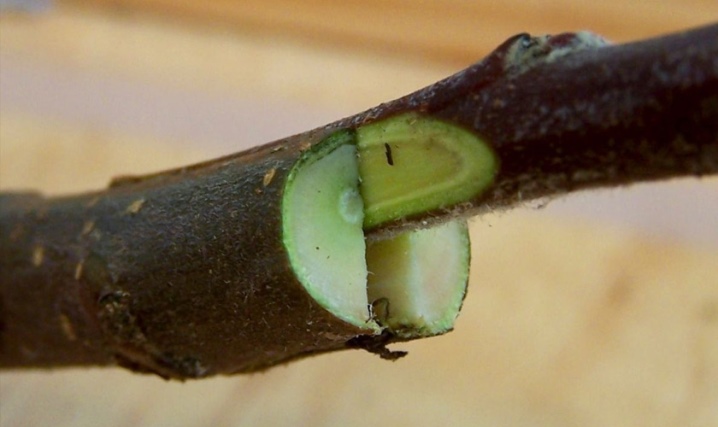
With a secateurs
The best way to create high precision slices. You can only prune smooth, unawakened cuttings, which are best kept in a cool place before starting the procedure.
By the bridge
This method is ideal for treating pest-affected trunks.... First of all, you should clean the damaged areas on the shoot and trunk. Next, form longitudinal cuts above and below the damaged area. The next stage is cutting off the cuttings and removing the buds from them. Form cuts in the same plane on the rootstocks. Fasten the lower and upper parts of the rootstock alternately. Treat the joints with garden pitch, and then fix with foil. Additionally insulate with burlap.
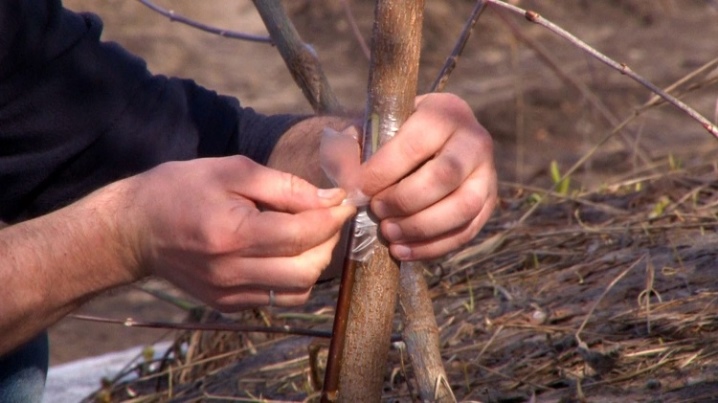
Under the bark
When using medium or large branches for grafting, as well as if there is a large difference between the thickness of the rootstock and cuttings, this technique is used. You should start with a diagonal cutting of the cutting: at a distance from the trunk of no more than 79 cm, from the ground - up to 20 cm. After that, you need to make a 6-cm cut in the bark and separate the wood from it.This is followed by the stage of forming an oblique cut on the handle. The cutting must be placed with the side of the incision under the bark.
The final stage is the processing of the joints of trees with a garden solution and fixation with a film.
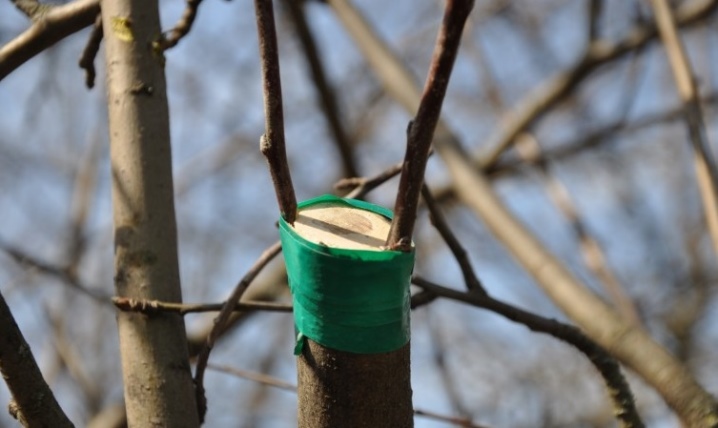
To the trunk
This method is identical to the already described bark grafting method. After the formation of a T-shaped incision in the bark of the tree, the scion should be cut diagonally. The stalk must be placed in an incision, then reinforced with a high-density film. Garden varnish treatment is the final stage of grafting.

Into the lateral incision
This method is effective for both summer and spring periods. The inoculation itself must be carried out in the lateral part of the shoot or seedling. When working with young trees, it is best to use skeletal branches. Pruning is carried out 15–20 cm obliquely from the ground. The distance from the trunk to the branch should not exceed 65 cm. The incision should be 40 cm long, and it is important to make it shallow (no more than a third of the seedling size in width).
A wedge should be cut on the handle using opposite cuts, one of which must be made shorter. Place the stalk in the cut and combine each of the created layers, then apply the garden varnish to the joints and fix it with a thick film.
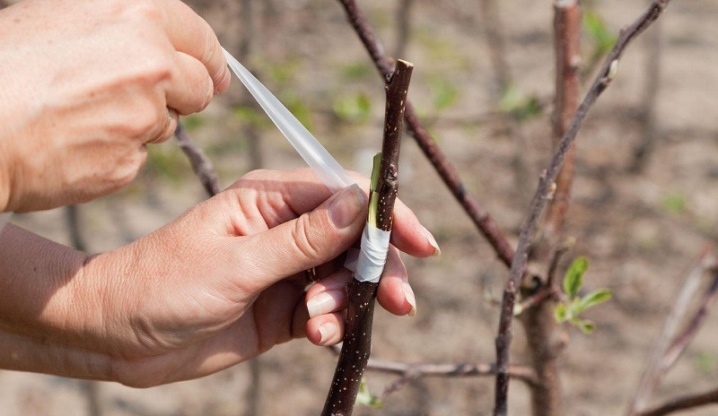
Oculated
This method is known as kidney (eye) grafting. Such an inoculation is carried out in the spring in two ways: in the butt or in the cut. For grafting, you can use dormant or sprouting buds from last season.
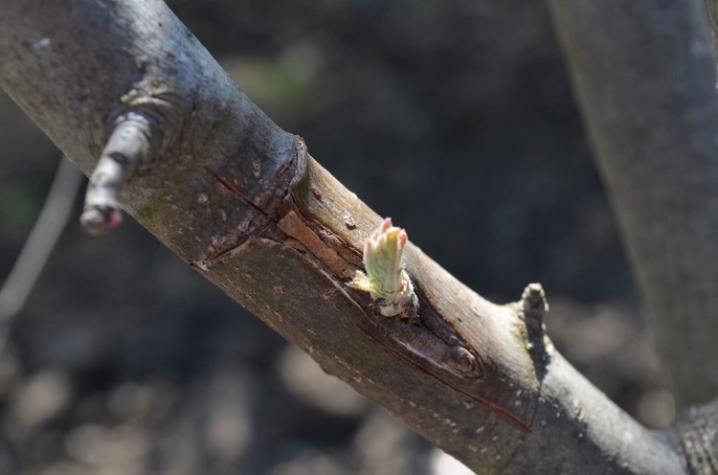
With a T-notch
Form a shield up to 3 cm long, about 5 mm wide. Make a T-shaped cut along the branch and place the shield in it. Secure the resulting structure with a dense film material.
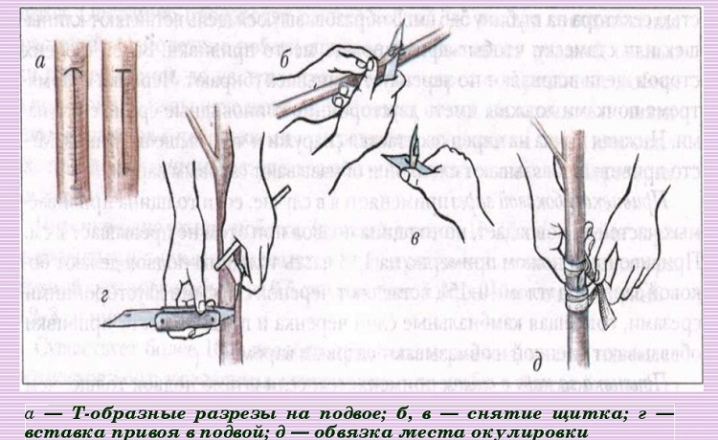
In the butt
An incision should be made on the rootstock with a pocket, after which a flap should be prepared in a suitable size. Place the flap in the pocket, fix it with foil. After the branch has taken root, remove the shoot above the bud area.
On a tree stump
It is important to prepare the stump first by removing the old parts. You can use one of the grafting methods: in the split or under the bark. Next, place the stalk in the area of the cut, apply the garden pitch and strengthen the joint area with dense material.
It is recommended to plant the apple tree on crops close to it, such as:
- wild;
- pear;
- plum;
- Rowan.

Follow-up care
At the initial stage after grafting, it is important to protect the tree from insects. Caterpillars and aphids usually attack young growth.
At this stage, care is as follows:
- timely and regular watering;
- adding dressings in the right amount;
- protection from birds, rodents and insects;
- reinforcement with garters and removal of the winding within the specified time frame.
It is also important to pinch, bend the shoots from time to time in order to regulate the height. In the next season, you will need to cut off excess young seedlings, keeping the strongest of them. All shoots, starting from the grafting site, ending with the base of the tree, should be removed. With active growth, shoots can be shortened by about a third of the length.
Autumn procedures for the care of grafted trees:
- tying up large shoots;
- feeding the tree;
- regular watering;
- hilling;
- applying a white composition to the trunk;
- covering the tree with warm material.
Thanks to the proven grafting method and quality care, the tree will grow healthy.
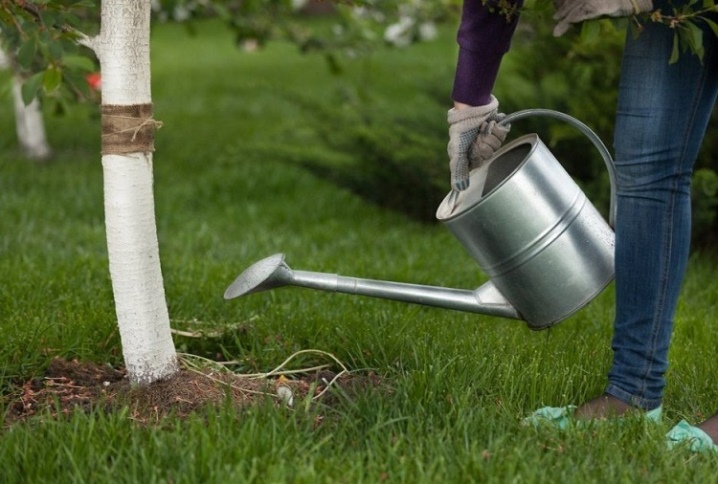







The comment was sent successfully.